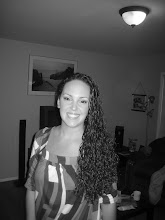“Thinking For Yourself”: Chapter 1 – Observation
Exercise 1: Discovery Exercise: Comparing Our Perceptions
I am looking at a picture of four men standing in front of a large white tent. One man, who is standing in the middle with his arms out to either side, is very tall and skinny. He is wearing a black hat, black buttoned jacket with a white shirt and black tie. He is also wearing black shorts, black tights and black shoes that are a little dusty from the dirt on the ground. Then there are two men on either side of this tall man. Each man is standing underneath the tall man’s arms. These two men are short and appear identical. They both look like they are dressed as matadors, also wearing black hats with silver trim and dangling silver circles. One hat has a feather attached, while the other has 2 pom-pom balls. The final man appears to be a dwarf, or little person. He is standing to the left side and a little in front of the tall man. The little person is wearing a tall black hat, with a white shirt and tie, a pianist jacket, black pants and shoes.
Exercise 2: Observing a Cube
1. What happens to the cube as you observe it?
The cube looks like it becomes three-dimensional as I continue to observe it.
2. How does observing feel as you do it?
I can feel myself concentrating on the cube and observing every angle of it. I also noticed myself wondering how long I should stare at this cube for.
Exercise 3: Observation and Insight – Observing Cartoons
“New Software To Boost Your Productivity” Cartoon:
I noticed that this is supposed to be software for computers, but the cartoon also mentions Y2K. Y2K was supposed to be a huge computer problem in the year 2000. People were speculating that computers were going to have major problems because of the year change. So, I perceive these ads in the cartoon to be contradicting. They are trying to sell you products for computers, but the products seem to guide you away from the use of computers. I am not sure that I completely grasp the concept of this cartoon. That uncertainty makes me feel confused.
“Tree/ Barcode” Cartoon:
I notice in this cartoon that there are barcodes on the trees, the rocks and the water. The only conclusion I can come up with as to the meaning of this cartoon is that everything is for sale. Trees are cut down and made into products and are sold. Rocks are available for purchase and water is also bottled and sold. Again, like the previous cartoon, I am unsure that this is definitely the meaning of this cartoon. Again, this leaves me feeling confused.
“What Do You See” Cartoon:
I believe this cartoon shows how different people (or animals in this case) see things differently. The solider sees acres available for war games. The realtor sees acres available for commercial and or industrial building. The artist sees the beauty of the land and wishes to paint the scenery and the deer sees home. I think this cartoon is a perfect example of observation and different points of view. When I read this cartoon and understood the meaning, I felt a sense of satisfaction and relief.
Exercise 4: Reading: “Look at Your Fish”:
1. Why did Agassiz keep saying “Look at your fish”? What was he trying to teach Scudder?
I think the reason Agassiz kept saying to look at the fish was because he wanted Scudder to really concentrate and take his time in observing the fish. He was trying to teach him that sometimes when you observe something, you judge or conclude too fast and you may miss some observations.
2. How would you describe the stages in Scudder’s process of looking? What happened at each stage?
I think that each stage of Scudder’s process of looking at the fish forced him to concentrate and focus more as each stage progressed. I also think that at the beginning of each stage, he became frustrated as he thought there was nothing more to observe.
3. How did Scudder change personally in the course of his “trial”?
I think Scudder changed by now realizing he needs to take his time to pay attention to the details of what he is observing.
4. Explain why you think Agassiz’s method of teaching was either effective or wasteful.
I think that Agassiz’s method of teaching was effective in this story. I think that Scudder has to go through the process of observation and all the stages in order to make him a better observer. Scudder was able to go through the motions of this trial himself, knowing after each stage there was something more to be seen. Scudder learned to take his time and look with his eyes in search for detail.
Subscribe to:
Post Comments (Atom)

No comments:
Post a Comment